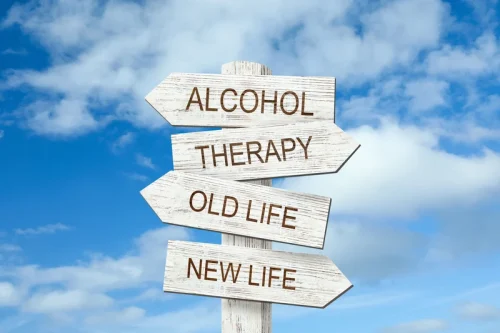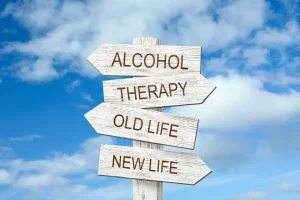
Furthermore, 12-step programmes usually involve fellowship, regular meetings, sponsorship (more experienced members guiding newer ones), and an emphasis on anonymity. This creates a supportive community where you can share experiences, strength, and hope, which can be crucial for sustained recovery and can ultimately help people break the cycle of addiction. By understanding the cycle of addiction, you’re equipped with the tools to identify the signs and patterns of substance misuse. This isn’t just about awareness; it’s about empowering yourself in the face of a seemingly insurmountable challenge. Breaking the cycle is possible, and there’s a whole community ready to support you in this journey.

Substance Abuse and Dependence
You agree not to access or use the Service in an unlawful way or for an unlawful or illegitimate purpose as determined by the Company or in any manner that contravenes this Agreement. You shall not attempt to damage, impair or disrupt the operation of the Service by any method, including through use of viruses, Trojan horses, worms, time bombs, denial of service attacks, flooding or spamming. According to the American Academy of Child and Adolescent Psychiatry, “Some teens will experiment and stop, or continue to use occasionally, without significant problems. Others will develop a dependency, moving on to more dangerous drugs and causing significant harm to themselves and possibly others. It is difficult to know which teens will experiment and stop and which will develop serious problems.” For others, the experimentation phase may not come until later in their life.
Is there a difference between the stages of drug and alcohol addiction?
The Company’s Site and the Services use industry standard SSL encryption to enhance security of electronic data transmissions. In addition, we urge you to take precautionary measures in maintaining the integrity of your data. Please be responsible in making sure no one can see or has access to your personal account and login/password information. If you use a public computer, e.g., at a library or a university, always remember to log out of the Site or Services. If you use Service through your employer’s computer network or through an internet café, library or other potentially non-secure internet connection, such use is at your own risk.
- They might become preoccupied with obtaining and using drugs, leading to increased risk-taking behavior.
- Early intervention can be one of the most effective forms of ‘treatment,’ but preventing substance use altogether offers the greatest crop of benefits.
- While a periodic hangover at work or an event is acceptable for Stage 3, at Stage 4 instances like that become a regular occurrence and its effects become noticeable.
- I understand that my healthcare information may be shared with other individuals for treatment, payment and healthcare operations purposes and/or as otherwise specified in the Notice of Privacy Practices.
Drug abuse refers to the harmful or hazardous use of psychoactive substances, including legal and illegal drugs. The World Health Organization (WHO) defines substance abuse as using a substance in a harmful way. It’s crucial to understand that breaking the addiction cycle often involves more than just willpower; it requires a combination of relapse prevention strategies, behavioural modifications, and the support of a strong network. There are many risk factors that increase a person’s likelihood of developing an addiction, which is why abstinence alone isn’t enough.

Physical Health Consequences
Our drug treatment and detoxification center in New York has caring, experienced professionals who can help you get your life back on track. The second stage of the addiction process occurs when a person begins to turn their use of alcohol or drugs into a habit. Especially if teens have certain risk factors for addiction, experimenting can be an easy path to a longer future of substance use disorders.
How to Break The Cycle of Addiction
Job loss, homelessness, and criminal activities to support the habit are not uncommon. The addicted person might find themselves in and out of jail, facing mounting legal fees and a criminal record that further limits their options for recovery. Social isolation becomes extreme as the addicted individual pushes away anyone who isn’t enabling their habit.
You might also notice they seem distracted and uncomfortable if they don’t have the substance regularly. As their dependence on it grows, they can feel sick, irritable, and unfocused until they have more. Knowing how addiction looks is a key step to finding treatment—and recovery. People in stage five may show signs of addiction in other areas of life, like having financial issues, losing their job, and having trouble with their relationships.

Addicts trying to quit without help will eventually lose control and fall back to substance use. Relapse often returns addicts to dependence, the stage that prevents most addicts from breaking out of the cycle. Recognizing the problem, finding treatment, and building a support network can be life-changing. Contact a treatment provider today to learn more about your treatment options. No matter what stage of addiction you are in, it can feel overwhelming and isolating.
Breaking the Cycle: Treatment and Recovery
This can be helpful for those affected by substance use disorders and their loved ones. Recognizing the stages of addiction provides a roadmap for understanding this often misunderstood disorder. Substance use disorders (SUDs) develop gradually and can be categorized into several distinct stages.
- Frequent use can also cause financial difficulties where there were none before.
- Or that anyone exposed to an environment of addiction is sure to end up with an addiction as well.
- Proper assessment of a dual diagnosis can help you in any stage of drug use and addiction.
- This neurotransmitter plays a crucial role in the brain’s reward system, creating feelings of pleasure and motivation.
This psychological attachment can be just as powerful, if not more so, than the physical dependence. As the brain adapts to the constant presence of a drug, it begins to compensate. This leads to tolerance, where more of the substance is needed to achieve the same effect. When the drug is removed, the brain’s compensatory mechanisms are thrown out of whack, resulting in withdrawal symptoms. This physiological dependence is a key factor in perpetuating the addiction cycle. The cycle of alcoholism symptoms addiction starts with the initial use of the substance or engaging in an addictive activity.
Veteran’s Mental Health and Substance Use Summit
If you’re ready to admit that you have a problem and embark on the road to recovery, speak to one of our compassionate counselors today about substance abuse recovery in Tampa. These withdrawal symptoms include negative emotions and symptoms similar to what a person would share with a physical illness. If you or someone you know is struggling with substance abuse, don’t wait for rock bottom. Remember, every journey to recovery begins with a single step – and cycle of addiction that step could be the most important one you ever take.

